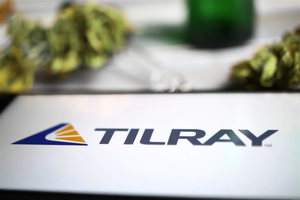The "Japan Cement Industry Market Size & Forecast by Value and Volume Across 80+ Market Segments by Cement Products, Distribution Channel, Market Share, Import - Export, End Markets - Databook Q2 2025 Update" report has been added to ResearchAndMarkets.com's offering.
The cement market in Japan is expected to grow by 5.1% annually to reach US$6.82 billion in 2025. The cement market in the country recorded strong growth during 2020-2024, achieving a CAGR of 5.8%. Growth momentum is expected to remain positive, with the market projected to expand at a CAGR of 4.8% during 2025-2029. By the end of 2029, the cement market is projected to expand from its 2024 value of US$6.48 billion to approximately US$8.23 billion.
This report provides a data-rich, forward-looking analysis of cement industry, covering market size, pricing trends, production, consumption, and segment-level performance from 2020 to 2029. It examines cement demand across key residential, non-residential, and infrastructure sectors alongside granular segmentation by cement type, distribution channel, end-user profile, and city tier.
Japan's cement industry is adapting to a mature market environment marked by declining domestic demand, aging infrastructure, and stringent sustainability expectations. With a shrinking population and subdued private construction activity, cement producers are increasingly focused on export markets, green innovation, and recycling-based business models. The industry is leveraging Japan's strong environmental policy framework to pioneer waste-derived fuels, carbon capture, and cement alternatives. Major players are optimizing production through automation and digitization while expanding partnerships for circular material flows. However, rising energy costs, labor shortages, and regulatory complexity continue to constrain operational efficiency.
Going forward, the industry's strategic relevance will depend on its ability to align with Japan's national decarbonization agenda while capturing regional export opportunities. Firms that excel in process innovation and sustainable product development are positioned to lead in a low-growth domestic environment.Japan's cement industry is adjusting to a structurally mature domestic market with a forward-looking strategy rooted in decarbonization, digitization, and circularity. While demographic decline continues to weigh on private demand, the pivot toward green infrastructure, public retrofit programs, and regional exports offers a foundation for stability.
Firms that invest in carbon-negative products, digital operations, and integrated waste valorization will gain resilience and strategic visibility. Policy alignment, advanced R&D, and operational agility will define industry leadership as Japan pursues its carbon neutrality goals by 2050. By focusing on value-added cement applications and leveraging Japan's environmental leadership, the industry can evolve from a commodity-focused model to a sustainability-led infrastructure enabler both domestically and across Asia-Pacific.
Public Infrastructure and Aging Asset Maintenance Are Sustaining Core Demand
- Maintenance of Aging Infrastructure Remains a Key Demand Driver: Japan's mature infrastructure network is undergoing rehabilitation across bridges, tunnels, and public buildings, sustaining demand for high-durability cement. Companies like Taiheiyo Cement and Sumitomo Osaka Cement are focusing dispatches toward public works projects across Kanto, Chubu, and Tohoku regions. Reinforcement of seawalls and slope protection infrastructure post-typhoon season continues to require specialty cement applications.
- Private Residential Construction Faces Long-Term Decline: Ongoing demographic decline and urban saturation have led to a continued fall in new residential starts, especially in suburban and rural areas. Large developers are shifting focus toward urban redevelopment and seismic retrofitting, generating limited but targeted cement consumption.
- Public Projects Under Green Transformation Are Supporting Specialized Cement Demand: Government-led green public works - such as low-carbon schools, energy-efficient municipal buildings, and carbon-neutral housing pilot zones - are using blended and low-heat cement variants. Cement firms are tailoring products to meet these evolving specifications in procurement contracts under the Ministry of Land, Infrastructure, Transport and Tourism (MLIT).
Firms Are Innovating Through Circular Economy and Low-Carbon Cement Initiatives
- Alternative Fuels and Waste Recycling Are Industry Standards: Japan leads globally in cement kiln co-processing of waste, with over 70% of thermal energy coming from alternative fuels in major plants. Taiheiyo Cement and Mitsubishi Materials have expanded partnerships with municipalities to co-process waste plastics, sludge, and biomass. These programs also help reduce national landfill burden and support Japan's Basic Act for Establishing a Recycling-based Society.
- Low-Carbon Cement Technologies Are Being Commercialized: In 2024, Taiheiyo Cement launched a new line of reduced-clinker cement incorporating steel slag and silica fume under its decarbonization strategy. The company is also advancing calcium-looping based CO? capture technologies at its Kumagaya plant as part of METI-funded pilot projects.
- Cross-Sector Collaborations Are Driving Cement Substitution Models: Cement firms are working with the steel, chemical, and construction sectors to develop alternative binder materials and promote carbon-negative concrete. Joint research with academia is being used to accelerate commercialization of geopolymer and LC3-based cement in test applications.
Production Is Affected by Energy Transition Costs and Workforce Limitations
- Electricity and Fuel Costs Are Squeezing Margins: Import-reliant energy pricing has surged in recent years due to LNG and coal market volatility, impacting kiln-based operations. Plants are shifting to off-peak power usage and expanding in-house solar generation to reduce exposure to energy cost spikes.
- Labor Shortages Are Delaying Plant Modernization and Maintenance: Japan's aging workforce has led to skill shortages in plant operations and heavy machinery maintenance, affecting uptime and upgrade schedules. To mitigate this, cement firms are increasing reliance on AI-based predictive maintenance and automation in material handling systems.
- Permitting and Environmental Audits Are Slowing Operational Adjustments: Enhanced environmental scrutiny and complex permitting for plant modifications and waste intake expansion are extending project lead times. In 2023-2024, approval for new co-processing facilities in Kyushu and Hokkaido was delayed due to environmental impact assessment revisions.
Medium-Term Outlook Relies on Green Infrastructure and Export Expansion
- Government Green Infrastructure Plans Will Sustain Strategic Demand: Japan's national decarbonization strategy includes retrofit programs for public buildings and transportation nodes, boosting demand for low-carbon cement. The Green Infrastructure Fund and Super City initiatives are aligned with procurement standards that favor recycled and blended construction materials.
- Export Markets Are Providing a Buffer to Domestic Demand Saturation: Cement exports to Southeast Asia and Oceania remain a growing revenue source, supported by proximity, maritime capacity, and competitive environmental credentials. In 2024, shipments to the Philippines, Vietnam, and New Caledonia increased, particularly for clinker and specialty blended cement.
- Innovation in Smart Cement and Carbon Accounting Will Drive Future Contracts: The adoption of embedded carbon tracking, Environmental Product Declarations (EPDs), and smart logistics is gaining traction in government procurement. Firms are using blockchain-based traceability and digital twins for lifecycle carbon accounting in premium project bids.
Risks Are Intensifying Across Demographic, Regulatory, and Cost Dimensions
- Shrinking Domestic Demand May Outpace Efficiency Gains: Continued population decline and property market stagnation could shrink baseline cement consumption faster than the sector's ability to diversify. Regional producers without export networks or niche product offerings may face consolidation or shutdown risk.
- Stringent Environmental Policies Could Strain Smaller Firms: As Japan tightens carbon disclosure and product lifecycle requirements, compliance costs may disproportionately affect mid-tier operators. Delays in subsidy rollouts or inconsistent regional enforcement could exacerbate competitiveness gaps.
- High Dependency on Imported Energy and Raw Materials: Japan's reliance on imported coal, gypsum, and certain SCMs exposes it to geopolitical risk and cost volatility. Firms are exploring domestic waste-based alternatives, but volumes are insufficient for full substitution.
Scope
Japan Cement Industry Overview
- Cement Production KPIs: Volume and Value
- Cement Consumption KPIs: Volume and Value
- Average Cement Price Trends: Tracked at overall and cement-type level
Japan Cement Market by Type of Cement
- Portland Cement
- Blended Cement
- Specialty Cement
- Green Cement
Blended Cement Market by Subtypes of Cement
- Type IS(X) - Portland-Slag Cement
- Type IP(X) - Portland-Pozzolan Cement
- IL(X) - Portland-Limestone Cement
- Type IT - Ternary Blended Cement
Specialty Cement Cement Market by Subtypes of Cement
- Rapid Hardening Cement
- High Alumina Cement
- White Cement
- Sulfate-Resistant Cement
- Other Niche Specialty Cements
Japan Cement Market by Key Sector
Residential Construction
- Multi-Family Housing
- Single-Family Housing
Non-Residential Construction
Commercial Buildings
- Office Buildings
- Retail Spaces
- Hospitality Facilities
- Restaurants
- Sports Complexes
- Other Commercial Properties
Industrial Buildings
- Manufacturing Units
- Chemical & Pharmaceutical Facilities
- Metal and Material Processing Plants
Institutional Buildings
- Healthcare Facilities
- Educational Institutions
- Other Institutional Structures
Infrastructure & Other Construction
Japan Cement Market by Distribution Channel
- Direct Distribution (B2B Sales)
- Indirect Distribution (Retailers, Dealers)
Japan Cement Market by End-User
- Ready-Mix Concrete Producers
- Concrete Product Manufacturers
- Individual Consumers (Self-use)
- Other Industrial/Commercial Users
Japan Cement Market by Location Tier
- Tier-I Cities
- Tier-II Cities
- Tier-III Cities
Japan Cement Trade Dynamics
- Key Export Destinations
- Key Import Sources
Competitive Landscape: Japan Cement Market
- Market Share Analysis of Key Players
For more information about this report visit https://www.researchandmarkets.com/r/qwdmx4
About ResearchAndMarkets.com
ResearchAndMarkets.com is the world's leading source for international market research reports and market data. We provide you with the latest data on international and regional markets, key industries, the top companies, new products and the latest trends.
View source version on businesswire.com: https://www.businesswire.com/news/home/20250714690194/en/
Contacts
ResearchAndMarkets.com
Laura Wood, Senior Press Manager
press@researchandmarkets.com
For E.S.T Office Hours Call 1-917-300-0470
For U.S./ CAN Toll Free Call 1-800-526-8630
For GMT Office Hours Call +353-1-416-8900






